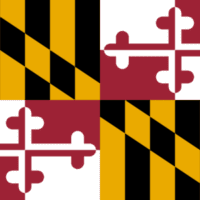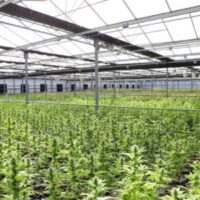Common Challenges in Cannabis Grow & Extraction Facilities

Challenges almost always come from goals that are not met. Because cannabis facilities have distinct needs and desired outcomes at each stage of their development, the challenges and problems also change.
Whether you’re starting your first cannabis grow house or expanding your successful processing plant, there can be challenges along the way. You can roll toward success with ease by anticipating common challenges and catching them before they have a chance to derail you. Being aware of potential hazards will save you time and money.
Read on to learn what challenges to anticipate in your start-up cannabis grow and/or extraction facility and see how a cannabis engineer can help you weather the storm.
Common Challenges in a Start-up Cannabis Grow Facility
Your goals for your grow facility probably include things like high yields, healthy plants, fast growth, and good security. Typical challenges might include finding the best temperature and humidity for the strains you’re growing, choosing your lighting set-up, making sure you’re using your space efficiently, and being as energy efficient as possible to avoid having your profits eaten up when you pay your utility bills.
Cannabis Grow Health
You want to make sure your crop is healthy and growing as fast as it can. This involves good lighting and healthy air circulation. Many growers are also experimenting with CO2 enriched environments, which is proven to help accelerate growth in many agricultural products. Large, healthy plants mean good profit margins for your business.
Cannabis Grow Space Challenges
Whether you own or rent, space is a major expense, so you want to make sure you’re making the best use of every square foot. This means paying attention to your grow layout. You may want to consider using a vertical system to maximize space. The layout of your ventilation equipment and ducting is also important, both for efficient use of space, but also for ease of maintenance and compliance with building codes.
Grow Energy Use Problems
Common Challenges in a Start-up Cannabis Extraction Lab
Extraction facilities need to focus on throughput, yield, and safety. The first two are critical to profit margins, while the third is protection of life and property, and also involves regulatory compliance and permitting.
Unrated Cannabis Extraction Equipment
Sometimes, we get a call from a client who has been denied permitting by their local fire marshal. Often, the denial stems from equipment that is not rated. There are multiple alphabet soup organizations that rate equipment for safety, including UL, FM, CE, and CTA. For example, solvent reclamation equipment can be rated to UL 2208. Systems that deal with volatile chemicals go through an extra layer of scrutiny and safety regulation.
There are unrated systems available on the market, and they generally cost quite a bit less than their listed counterparts. Some cannabis producers think they’re a great deal. Often, though, the additional cost of bringing them up to code or providing third party inspection, if that is even possible, will outweigh the initial savings. So make sure you know exactly what you’re buying.
Challenges in Cannabis Extraction Methods and Yields
Producers usually measure yield in terms of the amount of THC or CBD that results from their processing. Your yield depends largely on the extraction method, which can be mechanical or solvent based. Generally, higher yields come from solvent extraction, which is why most producers choose one of those methods. However, most solvents come with significant health and safety risks, which means more complicated permitting.
Location and Local Regulations for Cannabis Facilities
Challenges in Expanding Your Cannabis Facility
When you have a successful facility, you may want to capitalize on that success and take steps to expand your operation. You could increase the size of your grow house, add processing space, or bring in equipment with a larger capacity. Every choice has a unique cost-benefit analysis. And each choice also brings its own challenges. One thing they all have in common, though, is space planning.
Challenges in Permitting Your Cannabis Extraction or Grow Facility
Five Ways Expert Cannabis Engineering Can Help You Overcome Challenges
Having an expert in your corner can save time and money over the long term. Experienced cannabis professionals know what equipment will pass muster, how to lay out your facility efficiently, and how to get your facility through permitting with a minimum of fuss. That’s just the beginning. Here are just a few examples of the ways an engineer can support you as you focus on running your business.
1. Cannabis Facility Layout:
When you’re paying top dollar for rent or construction, you want every square foot to be used to its fullest. This means laying out your lab or grow, storage, offices, and equipment as efficiently as possible within regulations. Your equipment will need certain clearances, and there are regulations for storage and reclamation that you might not consider on your own. Experienced cannabis engineers can help you balance efficiency and regulatory compliance in your facility design.
2. Grow Facility Security:
Your equipment and plants are major investments, so you want to make sure they’re protected. Controlled entry and alarm systems are well worth having from the beginning. A competent cannabis engineer can advise you on the most up-to-date technology and how it can help you. They can also let you know if there are expensive features that you don’t necessarily need.
3. Cannabis Facility Fire Protection and Life Safety:
There are myriad options available to you, with monitors, alarms, suppression systems, and more. Some will be required, and others will be optional. The engineers on your team can help you decide what mix is the right one for your budget.
4. Extraction Facility Optimization:
Professional commissioning makes sure that your equipment is performing at its intended efficiency. A commissioning agent will run a series of tests and look at your energy usage to make sure that your systems are giving you their best. Or as one of our engineers puts it, “Commissioning is how you make sure you get what you paid for.”
5. Cannabis Facility Assessments:
If you’re looking at purchasing an existing grow or extraction facility, an engineering assessment can help you decide if it is worth the asking price. Assessments will look at the conditions of the facility itself, and the expected useful life of the equipment. There’s a big difference between an air handling unit (AHU) that is at the end of its life or one that has 10 good years left. Having this data can help you negotiate the right price, or plan for the future if you already own the facility.
Tell us about your project or give us a call.



